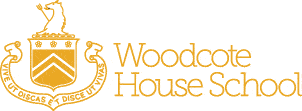Fire Prevention Policy
PART 1: FIRE SAFETY
INTRODUCTION
Our priority is to minimise the risk to life and to reduce injury by maintaining the physical fire safety of the school, in ensuring that staff, pupils and visitors do not add to the fire risk and through safe evacuation of our buildings if a fire breaks out. The fire prevention policy, procedures and risk assessments at Woodcote House School are designed to help our community to respond calmly and effectively in the event that fire breaks out in one of our buildings.
ROLE OF THE SCHOOL FIRE SAFETY MANAGER
The Bursar is the designated School Fire Safety Manager, who is responsible for ensuring that:
- The fire safety policy is kept under regular review by the SMT.
- The fire safety policy is promulgated to the entire school community.
- Everyone in the school (including visitors and contractors) are given clear instructions on where they should go in the event of fire.
- Records are kept of the fire induction training given to new staff and pupils.
- Procedures and arrangements for emergency evacuation are regularly tested and lessons absorbed.
- Fire risk assessments are regularly reviewed and updated.
- Fire prevention measures are meticulously followed.
- Fire procedures and risk assessments are reviewed on each occasion that a building is altered, extended or rebuilt, or when new buildings are acquired
- Records are kept of all fire practices, including night practice evacuations from boarding accommodation.
- Certificates for the installation and maintenance of fire-fighting systems and equipment are kept.
EMERGENCY EVACUATION NOTICE
- If you discover a fire, break the glass in the nearest alarm point to set off the alarm and raise the alarm locally by shouting ‘fire’. Leave the building by the nearest exit.
- If you are responsible for a class, make them leave quietly with you. No one should talk or run. Make your way to the Chapel.
- Do not take anything with you and do not allow the pupils to take anything. Shut doors and windows behind you if safe to do so.
- The School Office or the Master on Duty will summon the Emergency Services if the alarm sounds.
- Check you have all your class with you as soon as you reach the assembly point.
- Should the fire alarm ring in the evening, the dormitory monitors will be expected to lead their dormitory out of the building by the shortest available route. Each dormitory, or set of dormitories, have their own specific routes. The boys will put on their dressing gowns and slippers and leave the dormitory in an orderly line with each boy holding hands with the boy in front and behind. The dormitory monitor will lead the way with a torch and he will appoint a ‘tail-end Charlie’ to bring up the rear. All resident staff will help to evacuate the building.
- Once outside the chapel, a member of staff will be waiting with a register and it is up to the monitor to announce the number of boys in his dormitory (including him) so that an immediate head count can be taken. Once everyone is in the chapel and accounted for, the headmaster will then take another roll call.
- Report anyone who is missing immediately to the Headmaster who will inform the Fire Brigade. On no account should anyone return to any building until given permission by the Fire and Emergency Services.
- Remain at the Chapel with your pupils until the all clear is given.
______________________________________________________________
PART 2: FIRE SAFETY PROCEDURES
BRIEFING NEW STAFF AND PUPILS
PART 2: FIRE SAFETY PROCEDURES
BRIEFING NEW STAFF AND PUPILS
All our new staff (teaching and non-teaching alike) and all new pupils, are given a briefing on the school’s emergency evacuation procedures on their first day at Woodcote House school. We tell them where the emergency exits and escape routes are located, and where the outside assembly point is located. Fire action notices are displayed on the walls of rooms and in corridors, and we make certain that everyone knows where they should go on hearing the fire alarm. All new staff are shown how to activate the fire alarms if they see or smell a fire.
The safe evacuation of everyone – staff and pupils alike, is our priority. Protecting property comes second. No one should attempt to fight a fire at the expense of their own, or anyone else’s safety. We offer fire marshal INSET training, including the basic use of fire extinguishers, to all staff (last completed 10 Feb 2017). We will refresh this training for all staff at intervals of no more than two years. No one should attempt to use a fire extinguisher before he or she has been trained in its use.
SUMMONING THE FIRE BRIGADE
The School Office is manned between 8.00am and 18.00 during weekdays and 09.00 and 13.00 on Saturdays in term-time. The master panel is physically located in the corridor outside the Bursar’s Office. The School Office is always given advance warning of fire practices. If the alarm goes off for any other reason, the staff have standing instructions to summon the Fire and Emergency Service at once.
The master on duty has standing instructions to summon the Fire and Emergency Services if the alarms go off outside the hours that the School Office is staffed, (unless warned of a planned fire practice).
VISITORS AND CONTRACTORS
All visitors and contractors are required to sign in at Reception. They are made aware of the emergency evacuation notice (see above) and are shown the way to the assembly point.
When large numbers of visitors are at the school for open days, plays, concerts, exhibitions etc. a brief announcement is made advising them of the location of the emergency exits that they should use in the event of the alarms sounding.
DISABLED STAFF, PUPILS OR VISITORS
Should the need arise we will have a special one to one induction on fire safety for disabled pupils and their carers and for disabled members of staff or visitors.
RESPONSIBILITIES OF TEACHING STAFF
Teaching staff are responsible for escorting their pupils safely out of the building in silence and in an orderly fashion. The Headmaster is responsible for conducting a head count on arrival at the assembly point, and establishing the name of anyone who cannot be accounted for (and, if possible, their likely location). It is the responsibility of the Headmaster to ensure that this information is passed to the Fire and Emergency service as soon as they arrive.
On no account should anyone return to a burning building.
RESPONSIBILITIES OF FIRE MARSHALS
We have at least one trained Fire Marshal in every building and boarding house. All staff, including teaching staff, have received Fire Marshal training. All Fire Marshals are “competent persons” who have been trained to provide “safety assistance” in the event of a fire. Fire Marshals receive regular refresher training.
FIRE PRACTICES
We hold at least two fire practices every term at Woodcote House School. One during daytime to familiarise the boys with the procedure and then one night-time evacuation. This combined with a programme of inducting new staff and pupils with emergency escape procedures and the presence of trained Fire Marshals in every building helps to ensure that the school can be safely evacuated in the event of a fire.
FIRE PREVENTION MEASURES
We have the following fire prevention measures in place at Woodcote House school:
Escape Routes and Emergency Exits
· There are at least two escape routes from every part of all buildings
· Fire notices and evacuation signs are displayed in every room, corridor and stairwell.
· Fires extinguishers (of the appropriate type), smoke/heat detectors & fire hoses are located in every building in accordance with the recommendations of our professional advisors. The alarm system can be manually activated by breaking a glass panel, and is automatically activated when smoke/heat builds up.
· All stairs, passages and emergency exits are illuminated by emergency lighting
· Automatic door closures that are activated by the fire alarms are fitted on doors in or leading onto escape routes
· The master panel for the alarm system is located outside the Bursar’s office and shows the location of a fire.
· Alarms sound in all parts of the building and outside in the play area. Some areas are supplemented by visual alarms (red flashing lights)
· Keeping fire routes and exits clear at all times.
· Testing all fire alarms weekly (and recording all tests and defects). This is the responsibility of the Bursar who also arranges for an ISO9001 certified/BAFE approved contractor to carry out:
o Six monthly professional check on fire detection and warning equipment,
o An annual service of alarms, smoke detectors, emergency lights and fire extinguishers.
· Records of all tests are kept in the Bursar’s office.
Electrical Safety
· The School has current electrical test certificates for all its buildings. It uses NICEIC qualified Electrical Engineers to inspect and maintain its electrical installations [many of which are RCB protected and meet the requirements of BS7671 IEE wiring regulations].
· Annual portable appliance testing takes place.
· Records of all tests are kept in the Bursar’s office
· The Head of Science checks that all Scientific and DT equipment is switched off at the end of the school day
· The Catering Manager checks that all kitchen equipment is switched off at the end of the day and isolates the gas supply.
Gas Safety
· All gas appliances (boilers, kitchen equipment etc) are regularly maintained and serviced by Gas Safe Registered Engineers. Records of all tests are kept in the Bursar’s office.
· Landlord’s gas safety certificates are held for all school domestic accommodation.
· All kitchen equipment is switched off at the end of service.
· All laboratories are checked daily to ensure that the central gas supply is turned off.
Safe Storage
· We ensure that flammable materials used in teaching or maintenance are locked in purpose-made, flame-proof containers at the end of every day.
· Weapons and ammunition used by the rifle club are kept in a securely locked, fire resistant store the door of which is fire resistant.
Rubbish and Combustible Materials
· Flammable rubbish is stored away from buildings in the secured rubbish compound.
· Combustible materials used in teaching, catering, maintenance, grounds and caretaking are stored in flame proof cupboards
PART 3: FIRE RISK ASSESSMENT
The School’s Fire Risk Assessment meets the requirements of the Regulatory Reform (Fire Safety) Order 2005 (the FSO). Specifically it identifies:
· The hazard
· The people at risk
· The measures to evaluate, remove, reduce and protect from the risk
· The measures needed to record, plan, inform, instruct and train people in risk reduction or removal
· The arrangements for reviewing the assessment
All risk assessments follow a standard grid procedure for evaluating risk in all classrooms, kitchens, bathrooms, laboratories, workshops, pavilions, etc.
Woodcote House school has a professional fire risk assessment which is updated every year.
Copies of school’s fire risk assessments are available on request from the Bursar and can be viewed on line using a log in and password supplied by the Bursar. Any comments or suggestions for improvement are always welcome. All Heads of Department should ensure that they and their Department read the sections that are relevant to them.
November 2017



